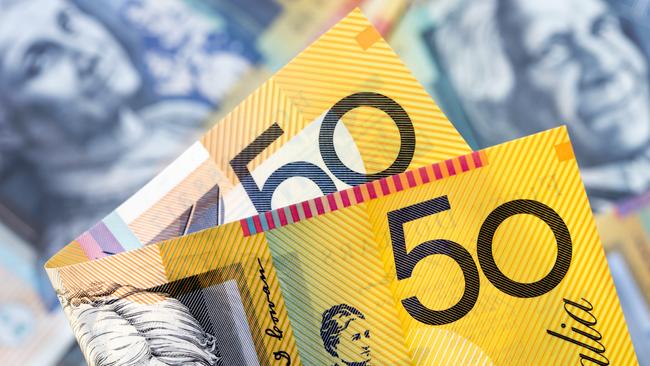Bank deposits boom as mortgage borrowers battle – the gap widens
The wealth gap between people with big home loans and people with big bank deposits has widened, and will expand further.

There are two clear groups of Australians right now – those with the cash and those without it, and the cash holders are laughing all the way to the bank.
The latest figures from financial regulator APRA show households stashed an extra $19.5bn into cash deposits in October, taking their total holdings to a record $1.54 trillion.
Research group Canstar says household deposits have risen more than $272bn since the Reserve Bank began raising interest rates in 2022.
Meanwhile, the victims of those rate rises – people with home loans – continue to struggle with repayments costing them 62 per cent more than they were paying in 2022, while the relief of potential RBA rate cuts keeps getting pushed further back into 2025.
They are losing because others are winning, and the fact that a large chunk of the population continues to hoard cash suggests there is still plenty of money to be spent in the economy to fuel inflation – and that’s not good news for borrowers.
Canstar insights director Sally Tindall says most people would not have predicted that deposits would surge at the same time the RBA cash rate remained at 4.35 per cent.
“The recent tax cuts and savings from the energy bill rebates could have easily been spent at the shops, but it appears many Australians are far more focused on saving this extra cash than spending it,” Tindall says.
The benefits of holding cash are clear, with interest rates near 5 per cent providing a decent income return that was not available for many years, plus your savings are government guaranteed.
It’s a brilliant buffer to hold in uncertain times, and economic and political uncertainty may be a reason why people are stashing more cash.
However, anyone with a home loan should avoid holding any cash because the numbers don’t stack up.
It makes little sense to have money in a bank account paying you 5 per cent, which is then taxed at your marginal rate, when you can instead divert that to your mortgage through offset accounts or redraw facilities, which deliver an instant 7 per cent after-tax saving in interest.
If people are following this golden rule of finance, it suggests that the vast majority of Australians’ $1.54 trillion in cash deposits belongs to households that don’t have home loans.
That’s a lot of spending power, and could continue to keep Australia’s inflation higher for longer, which will keep the RBA sitting on the sidelines for longer.

The latest Australian Bureau of Statistics monthly Consumer Price Index indicator showed headline inflation steady at an annual rate of 2.1 per cent, which is will within the 2-3 per cent target band the RBA seeks to achieve with its rate movements, as it was pushed lower by temporary government energy bill rebates.
However, underlying annual inflation, which strips out the volatile stuff and is the preferred measure for the RBA when watching CPI, rose from 3.2 per cent in September to 3.5 per cent in October. That’s way above the 2-3 per cent target and heading in the wrong direction for borrowers seeking rate relief.
Canstar’s Tindall says the latest inflation date points to a May 2025 RBA rate cut at the earliest, and bank forecasters are tipping at least three cuts next year.
Borrowers have learned in the past year or two that these forecasts are rubbery at best. As savers continue cheering these ongoing high interest rates, the wealth gap grows.






To join the conversation, please log in. Don't have an account? Register
Join the conversation, you are commenting as Logout